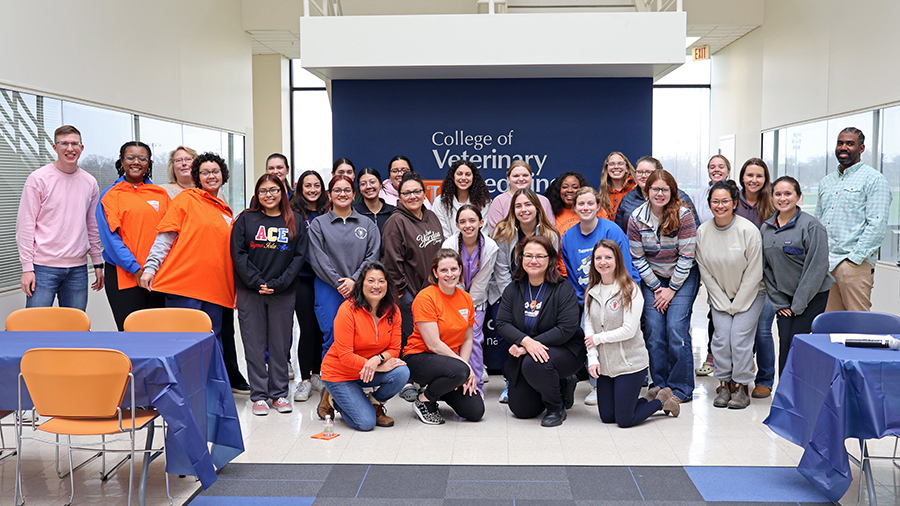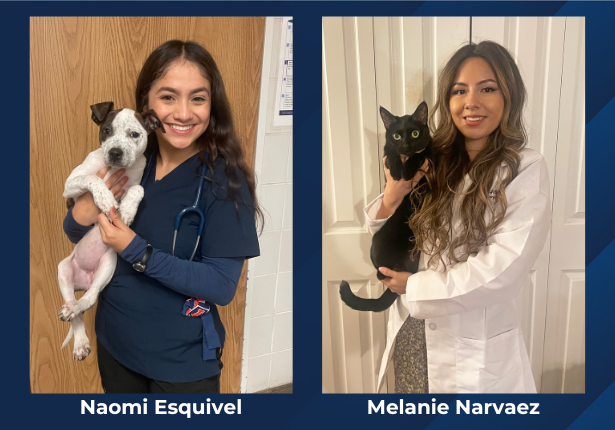Clinic Relies on Donations to Pay for Patient Care
[row]
[column size=”8″]
Two high-profile patients arrived at the University of Illinois Wildlife Medical Clinic in two days:
- A snowy owl came in with multiple fractures on January 30
- A bald eagle showing signs of neurological impairment arrived January 31
[/column][column size=”4″]
[/column][/row]
Clinic managers are hoping the public can help with monetary contributions toward the cost of care for these animals.
![[snowy owl gets an exam]](https://vetmed.illinois.edu/wp-content/uploads/2021/04/news-snowy-wmc-214x300.jpg) Snowy Owl
Snowy Owl
Update on Feb. 4: The snowy owl died on Feb. 3. She was briefly put under anesthesia last night to reassess and re-bandage her wing because she had loosened the bandage and worsened the fracture. She died while under anesthesia, despite her care team performing CPR. We are all saddened by her death, especially the team members who worked very hard to save her. We did everything we could to bring about her recovery, and we are grateful for the outpouring of support for this special patient. All donations to the Wildlife Medical Clinic go toward the care of wildlife patients.
There have been reports this season of unusual numbers of this species making an appearance in Illinois and other Midwest states outside its typical range of Canada and Alaska. Unfortunately, this female snowy owl encountered some troubles here in Illinois.
Radiographs (x-rays) show a significant pelvic fracture, radius and ulna fractures, some other minor fractures, and significant internal trauma. Her fractures are not recent and she is in poor body condition, so it is likely that she was injured days before arriving at the clinic.
“She has a long road ahead of her, including surgery and possibly advanced imaging (like a CT),” said Dr. Sarah Reich, a veterinarian who oversees the Wildlife Medical Clinic and also provides care for exotic pets through the university’s Veterinary Teaching Hospital. “She has a poor prognosis at this time, but we hope she will respond favorably to medical management and hopefully we can get her to surgery as soon as possible.”
Bald Eagle
Update on Feb. 2: The bald eagle died late on Feb. 1. A necropsy (autopsy for animals) will be performed to see if factors other than lead toxicity contributed to its death. (See update on necropsy results.)
![[bald eagle with lead poisoning]](https://vetmed.illinois.edu/wp-content/uploads/2021/04/news-eagle-wmc-300x180.jpg) A male bald eagle was brought to the Wildlife Medical Clinic Wednesday evening from the Illinois Raptor Center in Decatur, where finders from Warren County had initially taken the obviously ill bird. Clinic volunteers found no injuries, but the bird showed severe neurological impairments and tested positive for lead exposure. Treatment began immediately to counteract the lead.
A male bald eagle was brought to the Wildlife Medical Clinic Wednesday evening from the Illinois Raptor Center in Decatur, where finders from Warren County had initially taken the obviously ill bird. Clinic volunteers found no injuries, but the bird showed severe neurological impairments and tested positive for lead exposure. Treatment began immediately to counteract the lead.
Eagles are extremely susceptible to lead poisoning, more so than most other wildlife species. They are generally exposed to lead by ingesting prey that contained lead from a gunshot or a lead sinker used by fishers. The medicine used to treat eagles for lead exposure is more expensive than the medicines typically required by wildlife patients, especially considering the size of the patient.
On Monday, the clinic was forced to euthanize a bald eagle patient brought to the clinic last week with extremely high levels of lead because the bird was not recovering (from an unrelated musculoskeletal injury).
How to Help
The Wildlife Medical Clinic, a program within the College of Veterinary Medicine, sees about 2,000 ill or injured animals each year. All expenditures for food, diagnostic tests, equipment, medications, consultations, and surgeries for the clinic’s patients are covered through donations from the public.
Anyone who would like to make a tax-deductible donation toward the cost of caring for wildlife patients may give online or mail a check made payable to the University of Illinois Foundation to: College of Veterinary Medicine, Office of Advancement, 2001 S. Lincoln Ave., Urbana, IL 61802.

![[snowy owl]](https://vetmed.illinois.edu/wp-content/uploads/2021/04/news-snowy.jpg)


